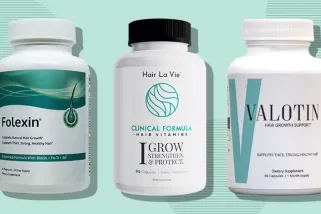In This Article
What is finasteride, and how finasteride works?
According to Yeliz Damar, Hair transplant expert, Finasteride, a medication, inhibits the conversion of testosterone to dihydrotestosterone (DHT), which can help prevent hair loss and promote hair regrowth in some individuals.

Finasteride is among the proven medications with proof of treating male pattern hair loss. While using this option as recommended works, you can complement the medication’s impact by adopting different measures.
Worth noting is that the timeline for seeing results varies primarily based on the individual, but most people can expect changes from about three months.
To speed up the impact of finasteride, consider increasing your intake of vitamin D and minoxidil.
Finasteride for hair loss - How to speed up finasteride results?
Here is how these elements can back up the role of finasteride.
#1 Vitamin D
Besides serving as an essential nutrient in the human body, vitamin D also stimulates cell growth and helps create new hair follicles. Vitamin D deficiency can lead to hair loss, with research linking the absence of the nutrient to conditions like alopecia [1].
Although increasing levels of vitamins might not prevent hair loss overnight, it supplements the work of finasteride. Below are the common sources of vitamin D:
Sunshine Exposure
This is the easiest form to increase vitamin D levels in the body. It is recommended to spend about 15 minutes basking in the sun to attain the right balance of nutrients.
Vitamin D-Rich Foods
Eating a balanced diet containing or fortified with vitamin D can raise the nutrients levels in the body. Foods like salmon and mackerel are naturally rich in vitamin D.
#2 Minoxidil
Since minoxidil contains different elements than finasteride, the two medications can be used together safely.
Minoxidil can improve the results because it contains ingredients proven to slow and stop hair loss. The two medications should be used in a balanced way to avoid the common and serious side effects of finasteride [2].
Minoxidil can either be used as a liquid or foam applied to the scalp to stimulate the hair follicles to grow thicker and longer hairs.
#3 Consistency
Like any other medication, finasteride dosage should be consistent as prescribed. Finasteride should be used daily to see results sooner, even if changes are not visible.
Generally, skipping the medications can lower the effectiveness and hurt your results. Finasteride can be incorporated into your daily routine, and you can set the alarm for a reminder.
It is essential to take the medication at the same time daily, either before bedtime or in the morning.
#4 DHT Inhibiting Shampoo
DHT-blocking shampoos can assist in breaking up the buildup on your scalp that can damage hair follicles. The shampoos stop the hormone DHT from damaging your hair follicles and, in the process, increase the amount of healthy hair [3].
When combined with minoxidil and finasteride, the DHT blocking shampoo can contribute to modest results.
The DHT inhibiting shampoos should stay on your scalp for several minutes before rinsing, and use them twice daily to get the best results.
#5 Balanced Diet
Factors like age and genetics influence hair growth, but you can slow the process by focusing on a balanced diet if you are on finasteride. Consuming a diet without all the necessary nutrients can result in hair loss.
On the other hand, eating a balanced diet with the right nutrients can improve hair growth. The food you consume should contain nutrients like biotin, proteins, vitamin C, iron, and carotene for hair growth [4].
Finasteride Results - Endnote
Treating hair loss requires patience, and the above-highlighted factors guarantee instant results. However, backing up your use of finasteride with habits like sticking to a balanced diet can slow down hair loss while promoting growth.
However, if unsure of how to back up finasteride, consult your doctor for directions.
8 Sources
We review published medical research in respected scientific journals to arrive at our conclusions about a product or health topic. This ensures the highest standard of scientific accuracy.
[2] Hair Loss Treatment: A Guide To Finasteride Side Effects: https://upguys.com/blog/finasteride-side-effects
[3] 4 DHT Blocking Treatments You Should Know: https://www.webmd.com/connect-to-care/hair-loss/dht-blocking-treatments-to-know-about
[4] Nutrition for Hair Regrowth: https://www.sutterhealth.org/ask-an-expert/answers/nutrition-for-hair-regrowth
[5] Adil, A., & Godwin, M. (2017). The effectiveness of treatments for androgenetic alopecia: A systematic review and meta-analysis. Journal of the American Academy of Dermatology, 77(1), 136–141. doi: 10.1016/j.jaad.2017.02.054. Retrieved from https://www.ncbi.nlm.nih.gov/pubmed/28396101
[6] Almohanna, H. M., Ahmed, A. A., Tsatalis, J. P., & Tosti, A. (2019). The Role of Vitamins and Minerals in Hair Loss: A Review. Dermatology and Therapy, 9(1), 51–70. doi: 10.1007/s13555-018-0278-6. Retrieved from https://www.ncbi.nlm.nih.gov/pmc/articles/PMC6380979/
[7] Shapiro, J., & Kaufman, K. D. (2003). Use of finasteride in the treatment of men with androgenetic alopecia (male pattern hair loss). The Journal of Investigative Dermatology. Symposium Proceedings, 8(1), 20–23. doi: 10.1046/j.1523-1747.2003.12167.x. Retrieved from https://www.sciencedirect.com/science/article/pii/S0022202X15529357
[8] Khandpur, S., Suman, M., & Reddy, B. S. (2002). Comparative efficacy of various treatment regimens for androgenetic alopecia in men. The Journal of Dermatology, 29(8), 489–498. doi: 10.1111/j.1346-8138.2002.tb00314.x. Retrieved from https://pubmed.ncbi.nlm.nih.gov/12227482/









 This article changed my life!
This article changed my life! This article was informative.
This article was informative. I have a medical question.
I have a medical question.
 This article contains incorrect information.
This article contains incorrect information. This article doesn’t have the information I’m looking for.
This article doesn’t have the information I’m looking for.